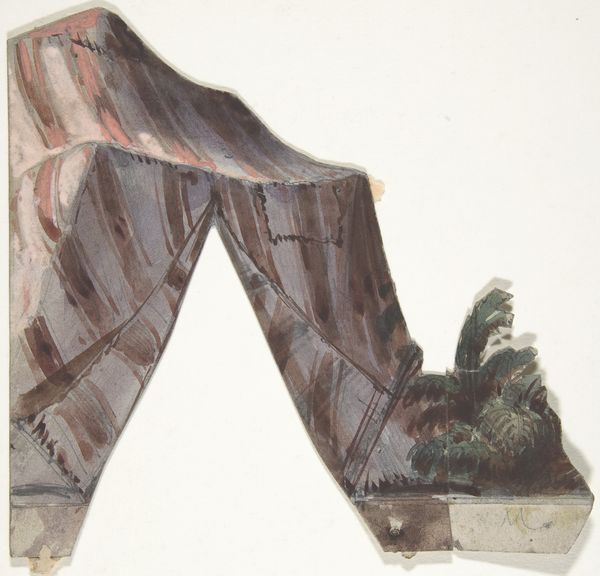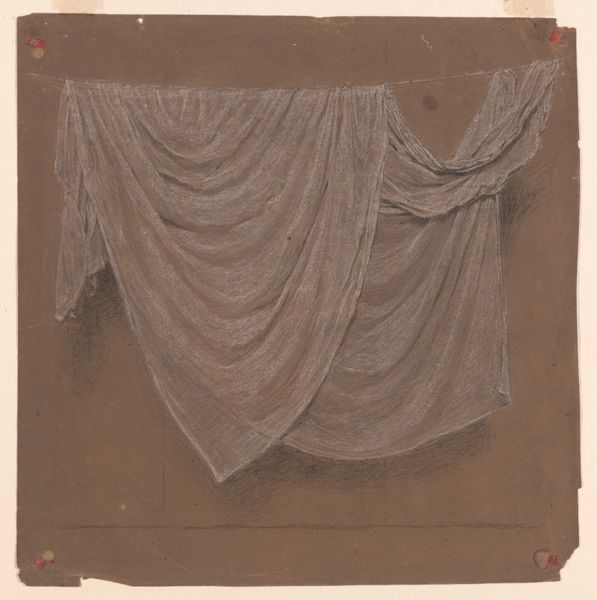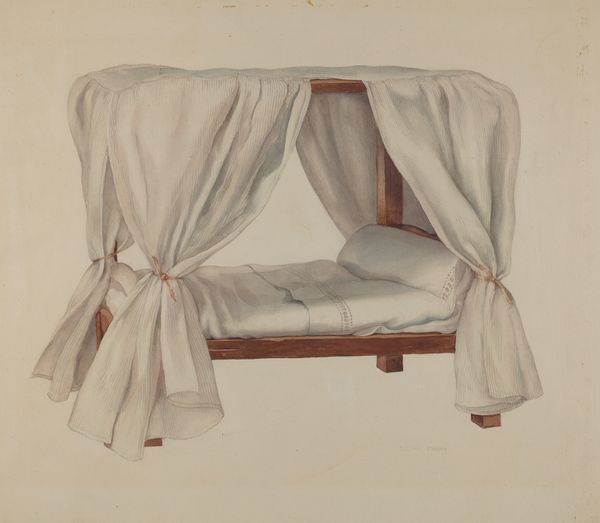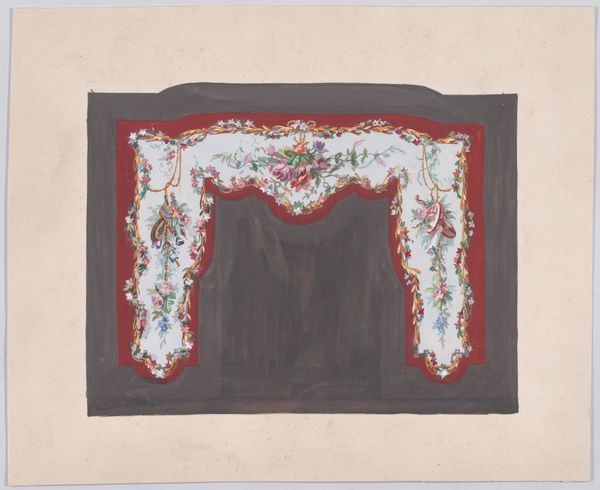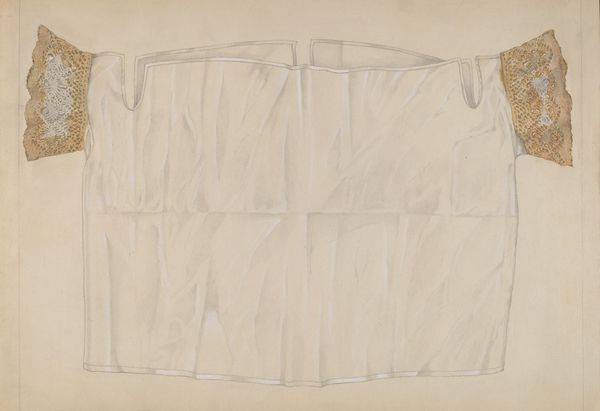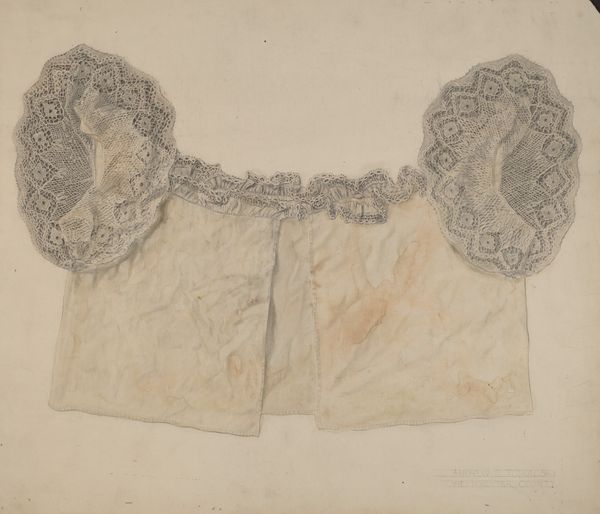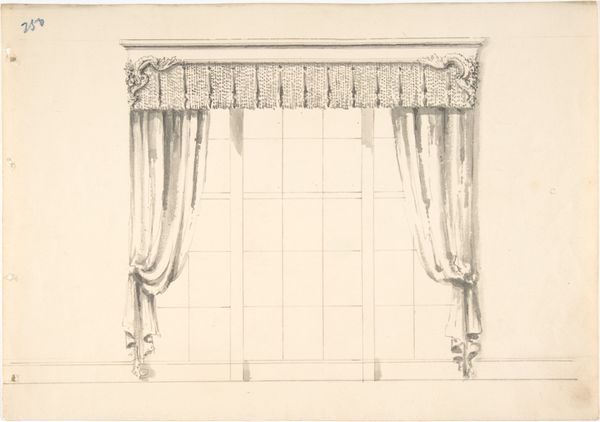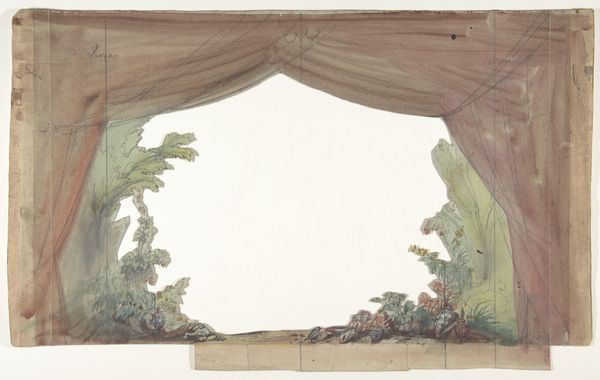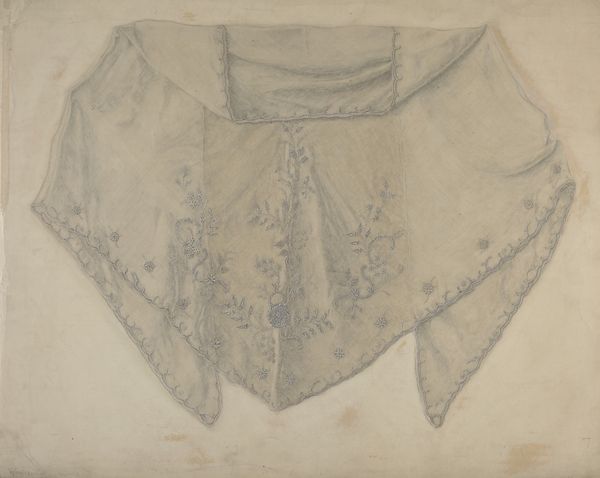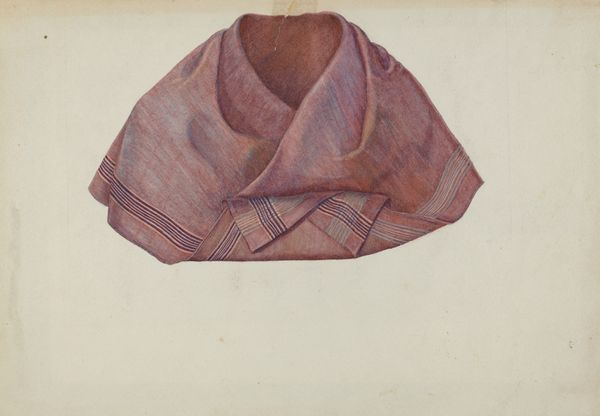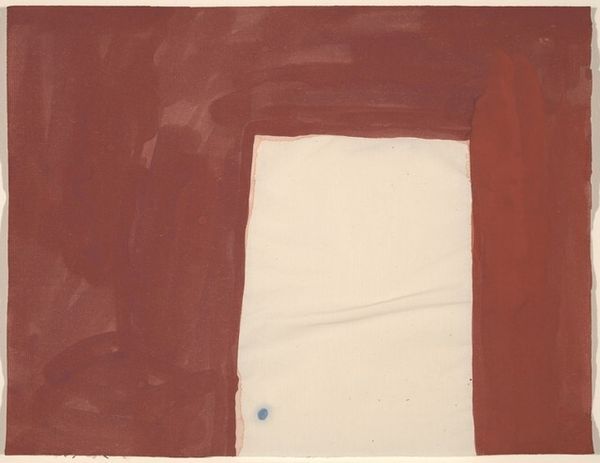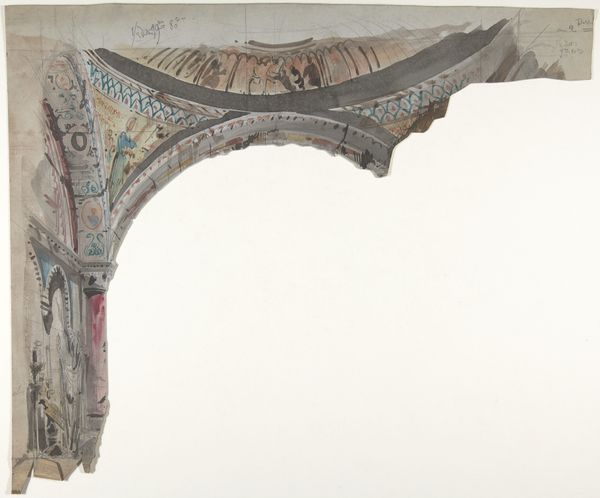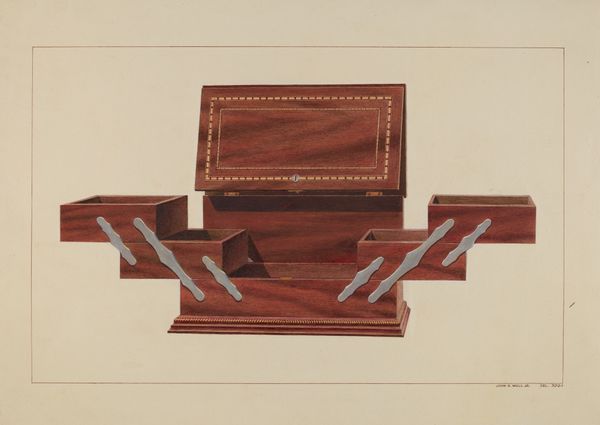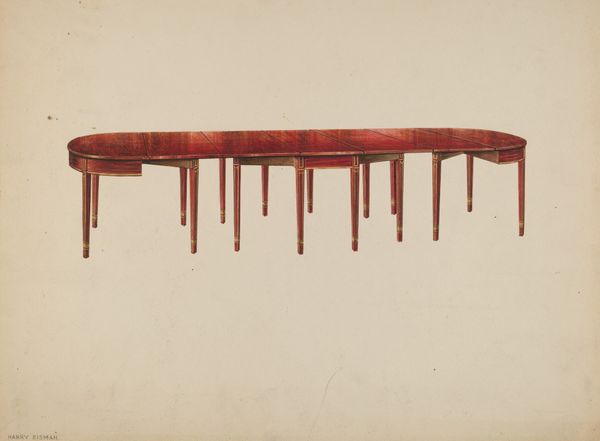
Copyright: Public Domain
Eugène Cicéri made this design for a stage set using watercolor and graphite, and while we don't have an exact date for it, we can place it within the nineteenth century when Cicéri was working. This piece speaks to the cultural institution of theatre and the specific social rituals around dramatic performance in France. The heavy, draped curtain suggests opulence and grandeur. The drawing may at first seem a mere technical sketch but it speaks to the social meaning of theatre as a place of collective experience and social display. In nineteenth-century France, the theatre was a crucial public space where social classes mixed and national identity was performed and contested. The design of sets, like the costumes and the plays themselves, could reflect or challenge the values of the time. If we want to understand the role of such images, we need to consult theatre archives, playbills, and social histories of the period. Only then can we fully grasp the visual codes that were embedded in the artistic practice of set design.
Comments
No comments
Be the first to comment and join the conversation on the ultimate creative platform.
